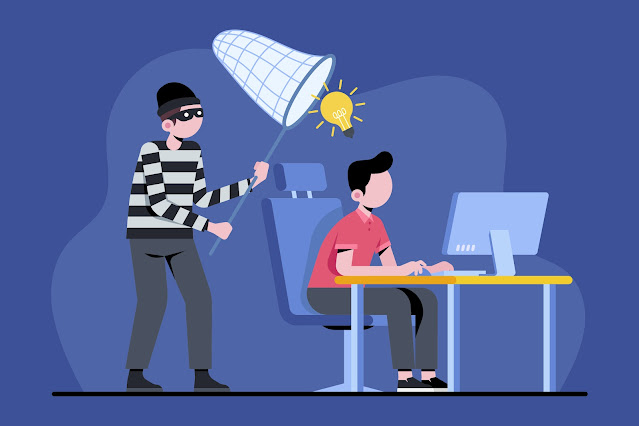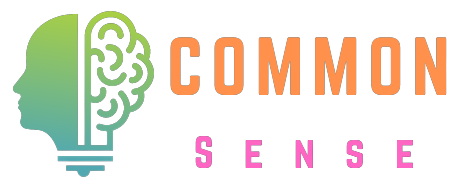
Preventing Identity Theft
I. Understanding Identity Theft
Identity theft occurs when someone steals your personal information and uses it without your permission. This information can be used to open new credit accounts, make unauthorized purchases, or even file false tax returns. The perpetrator can commit these fraudulent activities in various ways, including online scams, physical theft, and data breaches. There are some types of Identity Theft are:
1. Financial Identity Theft: Using someone’s personal information to access their financial accounts, open new credit accounts, or take out loans in their name.
2. Medical Identity Theft: Using someone’s identity to obtain medical services or medications, or to file insurance claims.
3. Criminal Identity Theft: Providing someone else’s personal information to law enforcement during an arrest or investigation.
4. Tax Identity Theft: Filing a fraudulent tax return using someone else’s Social Security number to receive a tax refund.
5. Child Identity Theft: Using a child’s Social Security number to open accounts, often going unnoticed for years.
II. How Identity Theft Happens
Common Methods Used by Identity Thieves are:
1. Phishing: Sending emails or text messages that appear to be from legitimate companies to trick individuals into providing personal information.
2. Skimming: Using a device to steal credit card information during a legitimate transaction.
3. Data Breaches: Hacking into company databases to steal large amounts of personal data.
4. Mail Theft: Stealing mail to obtain bank statements, credit card offers, and other documents containing personal information.
5. Dumpster Diving: Going through trash to find discarded documents with personal information.
6. Social Engineering: Manipulating individuals into divulging personal information through deceitful tactics.
III. Preventing Identity Theft
1. Safeguarding Personal Information
1. Protect Your Social Security Number (SSN): Do not carry your Social Security card in your wallet. Only provide your SSN when absolutely necessary and ensure the entity requesting it is legitimate.
2. Shred Sensitive Documents: Shred any documents that contain personal information before discarding them.
3. Secure Your Mail: Use a locked mailbox and promptly remove mail after delivery. Consider opting for electronic statements and bills.
4. Monitor Your Credit Reports: Regularly check your credit reports from the three major credit bureaus (Equifax, Experian, and TransUnion) for any unauthorized activity.
5. Use Strong Passwords: Create strong, unique passwords for each of your online accounts. Use a combination of letters, numbers, and special characters.
6. Enable Two-Factor Authentication (2FA): Enable 2FA on your online accounts for an extra layer of security. This requires a second form of identification in addition to your password.
7. Be Cautious with Personal Information Online: Avoid sharing personal details on social media and other online platforms. Adjust privacy settings to limit the visibility of your information.
2. Protecting Financial Information
1. Monitor Your Bank Accounts and Credit Cards: Regularly review your bank statements and credit card transactions for any suspicious activity. Set up alerts to notify you of large or unusual transactions.
2. Use Credit, Not Debit: Credit cards offer better fraud protection than debit cards. Use credit cards for online purchases and other transactions where security is a concern.
3. Be Wary of Public Wi-Fi: Avoid accessing sensitive information or making financial transactions over public Wi-Fi networks. Use a virtual private network (VPN) for a secure connection.
4. Secure Your Devices: Install antivirus and anti-malware software on your devices. Keep your operating system and software up to date to protect against vulnerabilities.
5. Freeze Your Credit: Consider freezing your credit with the three major credit bureaus. This prevents anyone from opening new accounts in your name without your permission.
3. Protecting Your Identity Online
1. Be Skeptical of Unsolicited Communications: Be cautious of emails, phone calls, or text messages asking for personal information. Verify the identity of the sender before responding.
2. Avoid Clicking on Unknown Links: Do not click on links or download attachments from unknown or suspicious sources.
3. Use Secure Websites: When shopping or banking online, ensure the website is secure by looking for “https” in the URL and a padlock icon in the address bar.
4. Limit Social Media Exposure: Be mindful of the information you share on social media. Avoid posting details such as your birthdate, address, or phone number.
4. What to Do If Your Identity is Stolen
1. Report the Theft: Immediately report the identity theft to the Federal Trade Commission (FTC) at IdentityTheft.gov. File a police report with your local law enforcement.
2. Contact Your Financial Institutions: Notify your bank, credit card companies, and any other financial institutions of the identity theft. Close or freeze any affected accounts.
3. Place a Fraud Alert: Contact one of the three major credit bureaus to place a fraud alert on your credit report. This makes it harder for identity thieves to open new accounts in your name.
4. Review Your Credit Reports: Obtain free copies of your credit reports from the three major credit bureaus. Review them for any unauthorized activity and dispute any fraudulent accounts.
5. Create an Identity Theft Recovery Plan: Follow the steps outlined by the FTC to create a personalized recovery plan. This may include contacting businesses where fraudulent accounts were opened and correcting your credit report.
IV. Tools and Resources for Preventing Identity Theft
1. Credit Monitoring Services
Credit monitoring services can help you keep track of your credit activity and alert you to any suspicious changes. Some reputable credit monitoring services include:
- Experian CreditWorks
- Equifax Complete
- TransUnion Credit Monitoring
- IdentityForce
- LifeLock
2. Identity Theft Protection Services
Identity theft protection services offer comprehensive solutions to safeguard your personal information and assist with recovery in case of identity theft. Some popular identity theft protection services include:
- IdentityGuard
- LifeLock
- IDShield
- PrivacyGuard
- Zander Insurance
3. Government and Nonprofit Resources
Several government and nonprofit organizations provide valuable resources and support for identity theft victims:
- Federal Trade Commission (FTC): IdentityTheft.gov offers a detailed recovery plan and resources for reporting identity theft.
- Identity Theft Resource Center (ITRC): Provides free assistance and guidance for identity theft victims.
- Consumer Financial Protection Bureau (CFPB): Offers information and resources on protecting your identity and recovering from identity theft.
- AnnualCreditReport.com: Provides free annual credit reports from the three major credit bureaus.

Conclusion
Preventing identity theft requires vigilance and proactive measures to protect your personal information. By understanding the methods used by identity thieves and implementing the strategies outlined in this guide, you can significantly reduce your risk of becoming a victim. Regularly monitor your accounts and credit reports, use strong passwords and two-factor authentication, and be cautious with your personal information both online and offline. If your identity is stolen, act quickly to report the theft and take the necessary steps to recover. Remember, safeguarding your identity is an ongoing process that requires constant attention and effort.
FAQ
Ques 1: What is identity theft and how does it happen?
Ans: Identity theft is the unauthorized use of someone’s personal information—like Social Security numbers, credit card details, or bank account information—to commit fraud or other crimes. It can happen through various methods, including:
a) Phishing: Fraudulent emails or texts tricking individuals into providing personal information.
b) Skimming: Devices that steal credit card information during transactions.
c) Data Breaches: Hacking into company databases to steal personal data.
d) Mail Theft: Stealing mail to obtain sensitive information.
e) Dumpster Diving: Retrieving personal information from discarded documents.
Ques 2: How can I protect my personal information from identity thieves?
Ans: To protect your personal information:
a) Guard Your Social Security Number (SSN): Only share it when absolutely necessary and with trusted entities.
b) Shred Sensitive Documents: Shred documents with personal information before discarding them.
c) Secure Your Mail: Use a locked mailbox and promptly remove mail.
d) Monitor Your Credit Reports: Regularly check credit reports for unauthorized activity.
e) Use Strong Passwords: Create unique, strong passwords for each account.
f) Enable Two-Factor Authentication (2FA): Add an extra layer of security to online accounts.
g) Be Cautious Online: Limit the sharing of personal details on social media and use privacy settings.
Ques 3: What should I do if I suspect my identity has been stolen?
Ans: If you suspect identity theft:
a) Report the Theft: Contact the Federal Trade Commission (FTC) at IdentityTheft.gov and file a police report.
b) Notify Financial Institutions: Inform your bank and credit card companies to close or freeze affected accounts.
c) Place a Fraud Alert: Contact one of the three major credit bureaus (Equifax, Experian, TransUnion) to place a fraud alert on your credit report.
d) Review Credit Reports: Obtain and review your credit reports for unauthorized activity.
e) Create a Recovery Plan: Follow the steps outlined by the FTC to rectify your credit report and reclaim your identity.
Ques 4: Are there any tools or services that can help prevent identity theft?
Ans: Yes, several tools and services can help prevent identity theft:
a) Credit Monitoring Services: Monitor credit activity and alert you to suspicious changes (e.g., Experian CreditWorks, Equifax Complete, TransUnion Credit Monitoring).
b) Identity Theft Protection Services: Offer comprehensive solutions and recovery assistance (e.g., LifeLock, IdentityGuard, IDShield).
c) Government Resources: The FTC, Identity Theft Resource Center (ITRC), and Consumer Financial Protection Bureau (CFPB) provide valuable information and support.
Ques 5: How can I safely use public Wi-Fi and protect my information online?
Ans: To safely use public Wi-Fi:
a) Avoid Sensitive Transactions: Don’t access bank accounts or make purchases over public Wi-Fi.
b) Use a VPN: A Virtual Private Network (VPN) encrypts your internet connection, protecting your data from prying eyes.
c) Secure Your Devices: Ensure your device's firewall is on, and antivirus software is up-to-date.
d) Use Secure Websites: Look for “https” in the URL and a padlock icon in the address bar before entering personal information.
e) Log Out When Done: Always log out of websites and accounts when finished, especially on shared or public devices.
By following these practices, you can better protect your personal information from identity theft.







Do Leave Your Comment